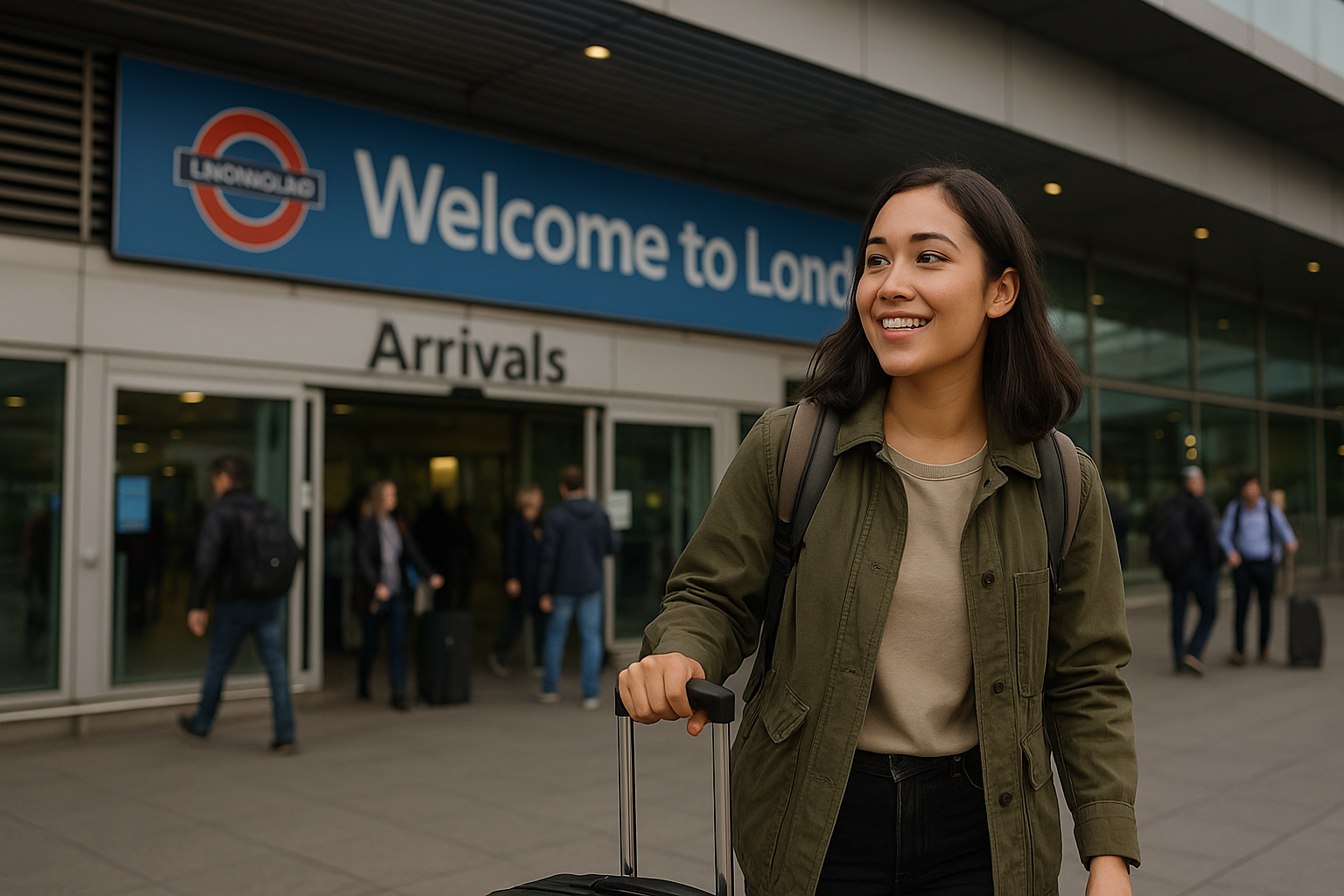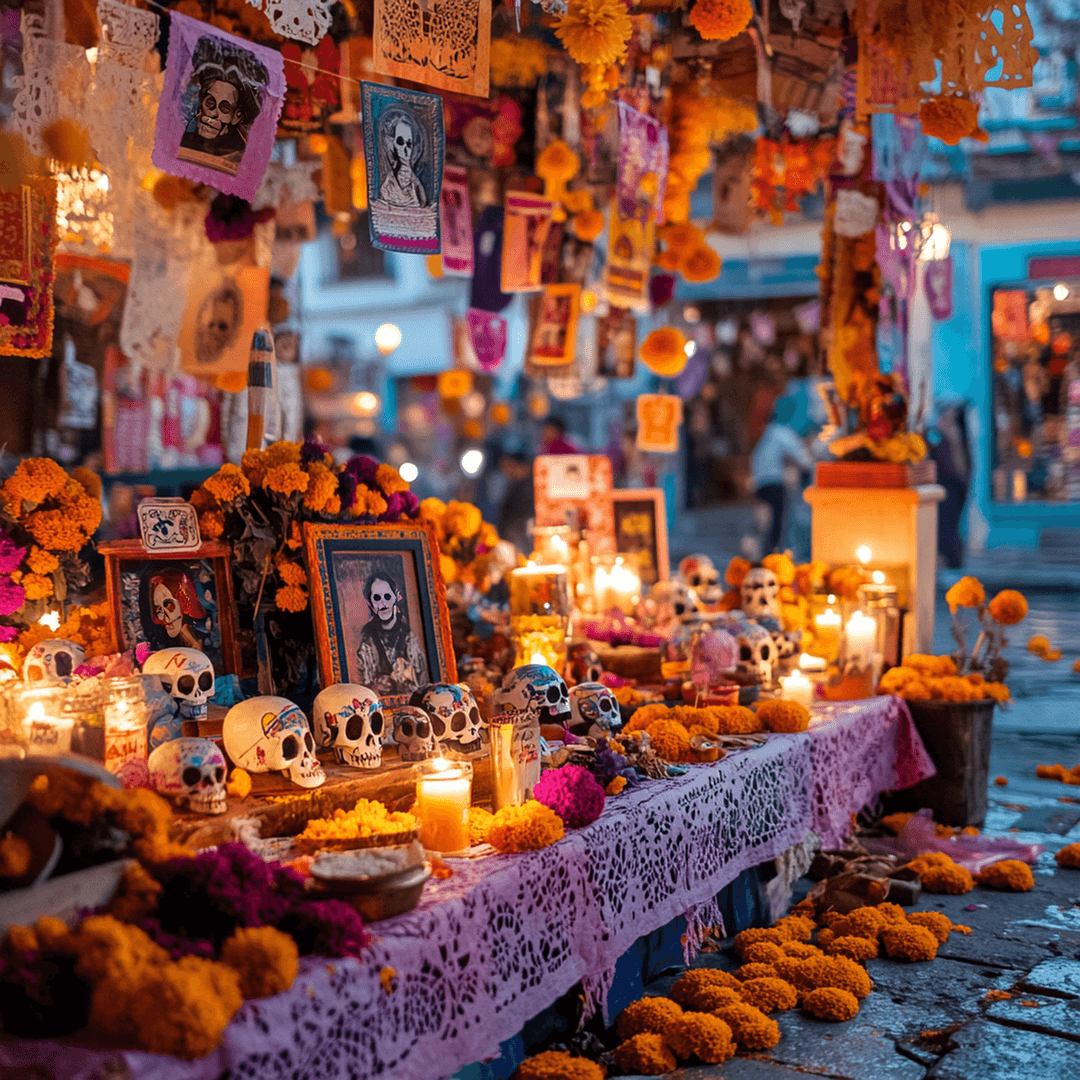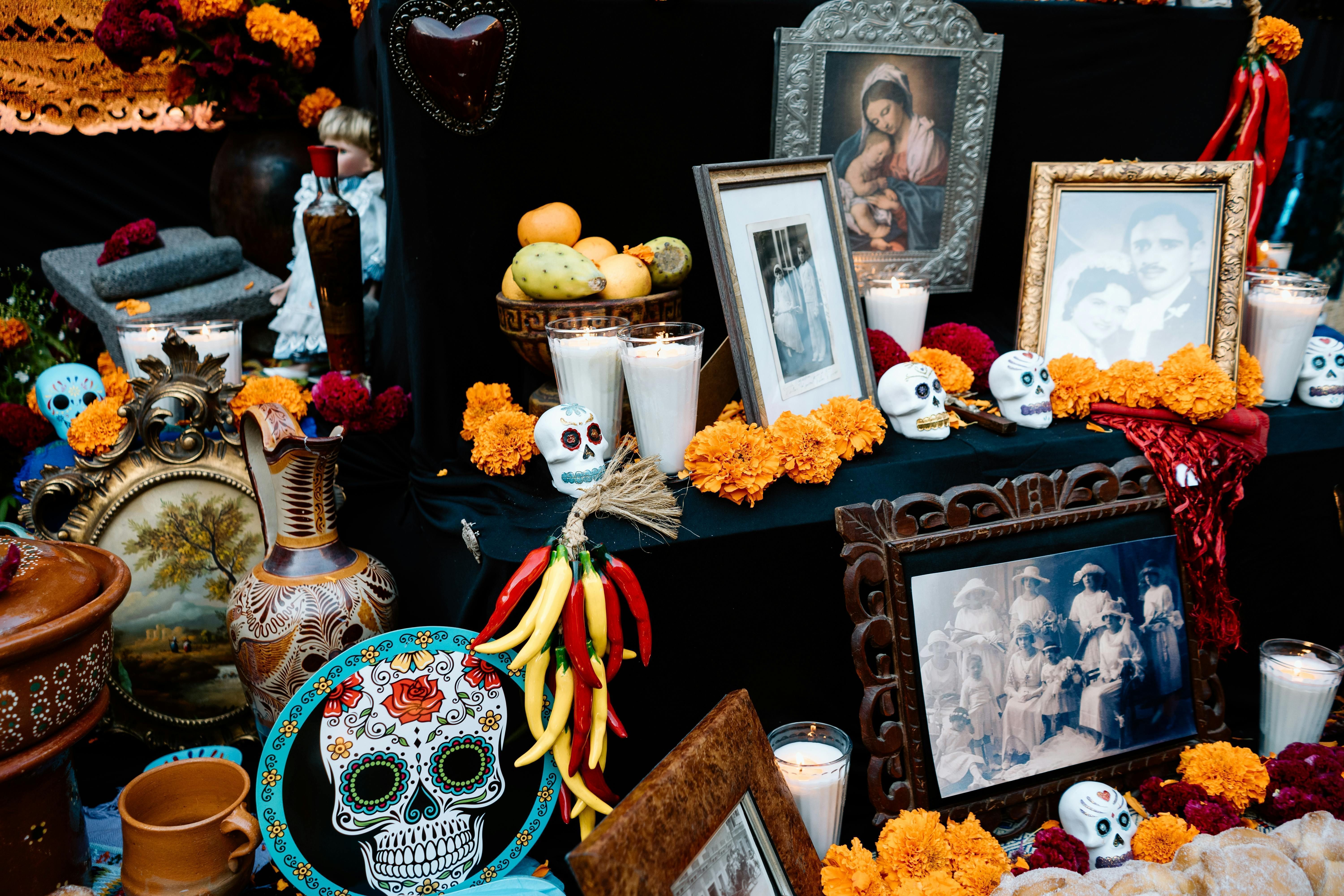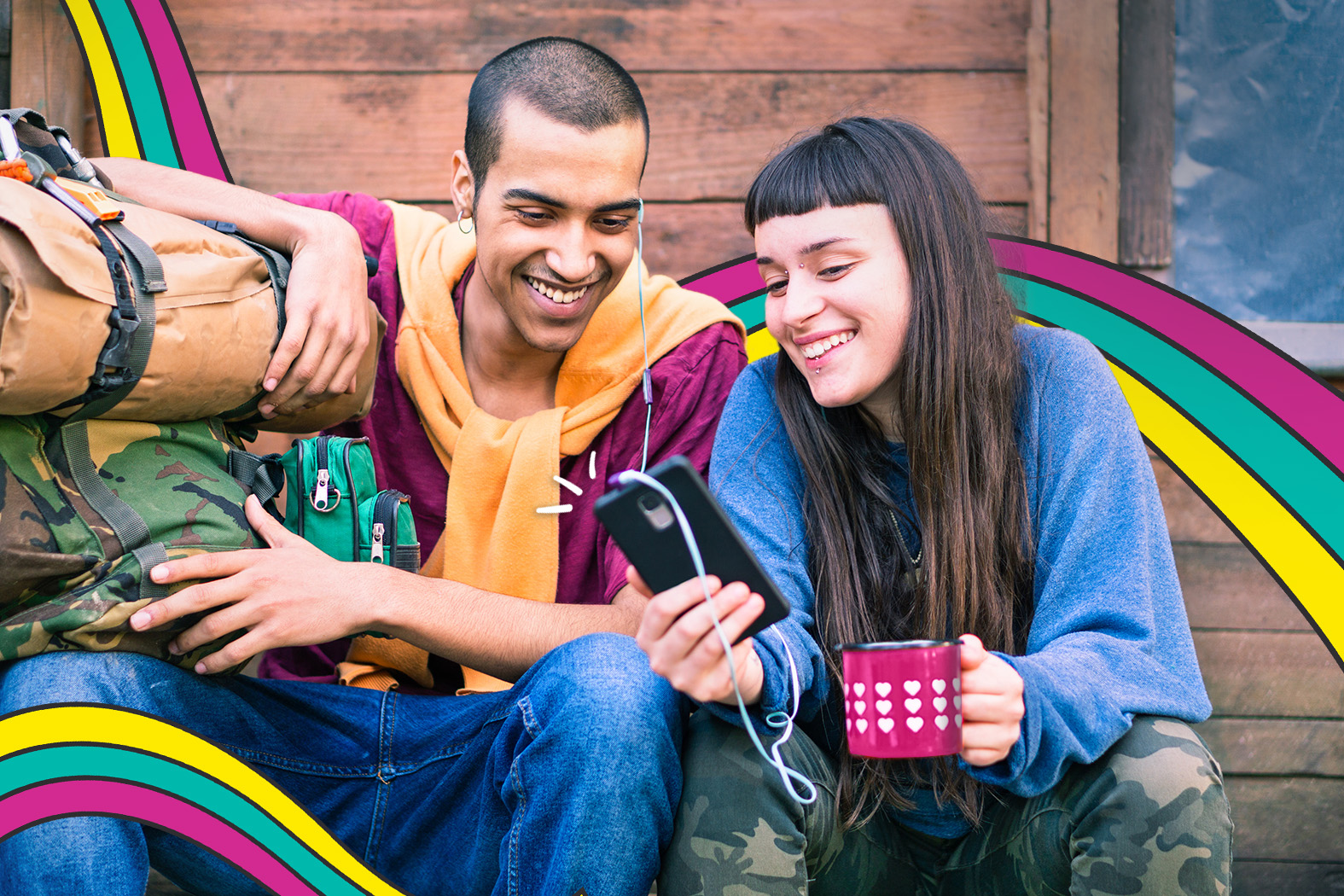 A First-Timer’s Guide to Immigrating to the UK
A First-Timer’s Guide to Immigrating to the UKWhether you're moving from India, China, Pakistan, or the USA there's a few things to know before booking a flight...

Mexico City (or CDMX) comes alive each November as locals celebrate their loved ones who've passed. Here’s how to seize the day (of the Dead) when you’re visiting in 2024.
Día de los Muertos (or Día de Muertos, AKA Day of the Dead) is a dazzling celebration of the dead and the living. The festivities honour those who’ve left us, but they’re all about joy rather than mourning. Each year, Mexico transforms with street carnivals, intricately-designed altars, illuminated cemeteries, streets covered in orange marigolds and parades of dancing skeletons to celebrate the deceased.
The holiday has been around for hundreds of years, starting with the Aztecs – it’s even been designated an Intangible Cultural Heritage of Humanity by UNESCO. And, more recently, it’s been attracting more of the world’s fascination thanks to movies like Coco (Disney Plus or BBC) and James Bond’s Spectre (Amazon Prime or ITV). Both of which are based in Mexico City, where you’ll find some of Día de los Muertos’s most exciting events.
Day of the Dead is celebrated every 1st and 2nd November – in 2024, that works out ideally on a Friday to Saturday. It’s during these 24 hours that it’s believed the gates of heaven open to allow the spirits of deceased ancestors to reunite with their families. But the celebrations don’t stop there; in Mexico City, things kick off from mid-October and go on throughout November.
Not only does late October and early November mean Día de los Muertos, but it also marks the start of the dry season in Mexico City, which makes it the perfect time to visit. Formula 1 fans can also catch the Mexico City Grand Prix, which is in town the weekend beforehand.
One of the most traditional ways to celebrate Día de los Muertos is with a day trip to the charming San Andrés Mixquic – about 1.5 hours south of Mexico City. The ‘Barrio Magico’ (an official designation meaning ‘magical neighbourhood’) fills with parades, plays, poetry, concerts and folk dance each 1 & 2 November. Locals have been celebrating their ancestors here since the 11th century and rumour has it that Coco was inspired by the cemetery here. The two-day event ends with La Alumbrada (“the illumination”) when graves in the local cemetery are decorated with elaborate designs made of flowers, colourful sawdust and illuminated with thousands of candles. It’s quite a spectacle.
.jpg)
While Mixquic’s centuries-old cemetery traditions inspired Coco, this parade was actually inspired by the James Bond film Spectre, which featured a fictional Day of the Dead celebration. Mexico City quickly adopted the idea – and now the grand parade along Paseo de la Reforma is one of the biggest and most loved Dia de Muertos celebrations in the country. There are dazzling processions across Paseo de la Reforma all throughout October and November, including the Alebrijes Parade, which features fantastical (and huge!) brightly-coloured papier-mâché animals, as well as skeleton dancers and theatrical displays celebrating Mexican heritage.
.jpg)
Two words: Mega. Ofrendas. Enormous and intricate ofrendas (altars with ‘offerings’ for the deceased, believed to help lead the departed home) are erected all over Mexico City’s squares and museums, and the Mega Ofrendas in the Zócalo (the capital’s main square) are some of the city’s most anticipated. These elaborate and gigantic displays showcase works by local artists and take on a theme each year. What will it be for 2024? Hop on a plane and find out…

Ofrendas - offerings placed in a home or community altar
Known for its cobblestone streets, historic architecture, arty markets and being Frida Kahlo’s old stomping ground, a stroll through the leafy Coyoacán neighbourhood is charming at any time of year, but it’s best enjoyed during Day of the Dead, when the district goes all-out with community ofrendas, street performances, crafty classes and markets selling traditional items – like sugar skull sweets and handicrafts. Most excitingly, there’s a festival celebrating all things bread and chocolate, Pan de Muerto (AKA Bread of the Dead). Start at Plaza Hidalgo, Coyoacán’s historic heart and work up an appetite.
If your plan is to celebrate Day of the Dead in a big way, then there’s no better place to go than Panteón Civil de Dolores - Mexico’s biggest and oldest cemetery. Somehow this famous and very large cemetery is hidden away in one of the city’s parks, Chapultepec. Its sculpture-like gravestones and tombs get drenched in bright orange marigolds, paper garlands and candles each Day of the Dead, as families gather with live music and food. There are plenty of smaller cemeteries worth visiting too, like Panteón Español and Panteón Jardín.
Leave your Batman costume at home; this isn’t Halloween. Instead, you’ll see lots of brightly coloured sugar skulls and skeletons, known as calacas and calaveras, and lots of people dressing up as folk character, La Catrina, who finds her roots in the works of Mexican Illustrator, Jose Guadalupe Posada.
Mexico City is huge (it’s the largest Spanish-speaking city in the world!), so you’ll want to stay connected as you make your way around. You’ll also want to be connected to share those unique moments. Make sure you’ve sorted your eSIM, so you don’t have to think about wi-fi hotspots when you’re hailing an Uber. Check out this article about the best eSIMs for travelling in Mexico.
Always be mindful when visiting cemeteries and participating in rituals; it’s not unheard of to ask for permission before taking photos.
This can enhance your interactions and understanding of the cultural nuances. For example, Locals call it Dia De Muertos, because it is a direct translation for All Souls' Day.
Some other useful phrases:
"Feliz Día de los Muertos" – Happy Day of the Dead.
"¿Puedo tomar una foto?" – Can I take a picture?
"¿Dónde está el baño?" – Where is the bathroom?
"Una cerveza, por favor." – A beer, please.
"¿Cuánto cuesta?" – How much does it cost?
"No hablo mucho español." – I don’t speak much Spanish.
 A First-Timer’s Guide to Immigrating to the UK
A First-Timer’s Guide to Immigrating to the UKWhether you're moving from India, China, Pakistan, or the USA there's a few things to know before booking a flight...
 What Is an eSIM UK? Your Guide to Cheaper, Smarter Travel Data
What Is an eSIM UK? Your Guide to Cheaper, Smarter Travel DataDiscover what a UK eSIM is, how it works and why it’s a smarter way to stay connected. This guide breaks down everything travellers need to know with no jargon, just real info and instant solutions from Sim Local.
 Best eSIMs for Travel in Europe (2025)
Best eSIMs for Travel in Europe (2025)Our top 6 eSIMs for travel in Europe. And other things to consider...
Destination
Shop
About
Help
Contacts:
© 2025 Sim Local (IRELAND) Ltd. All Rights Reserved.